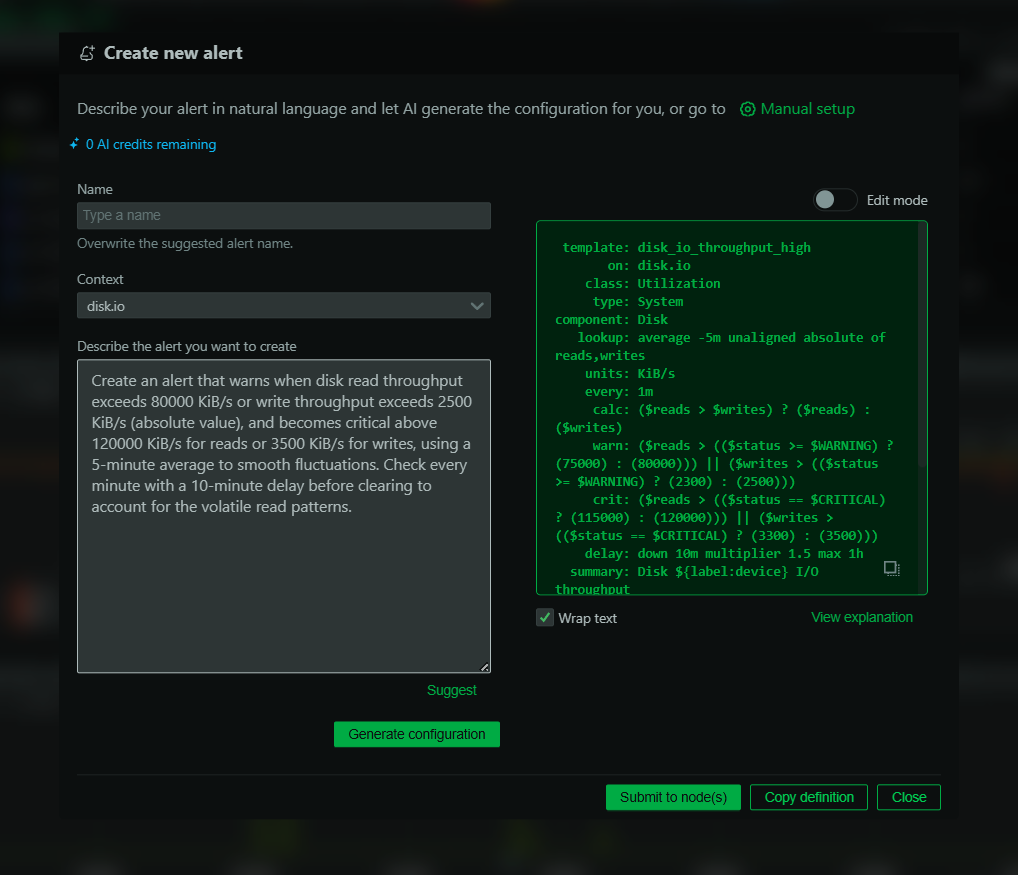VMware vCenter Server Monitoring
What Is VMware vCenter Server?
VMware vCenter Server is a centralized platform for managing VMware vSphere environments. It allows administrators to automate and deliver a virtual infrastructure with confidence. vCenter Server provides essential vSphere and ESXi host management capabilities for IT teams.
Monitoring VMware vCenter Server With Netdata
Netdata offers a real-time monitoring solution for VMware vCenter Server with its robust vSphere collector. This powerful tool allows you to track host and virtual machine (VM) performance statistics, providing valuable insights into your virtual environments.
Why Is VMware vCenter Server Monitoring Important?
Monitoring VMware vCenter Server is crucial for maintaining the health and efficiency of your virtual infrastructure. It helps identify performance bottlenecks, resource constraints, and potential failures before they impact operations, ensuring optimal performance and uptime.
What Are The Benefits Of Using VMware vCenter Server Monitoring Tools?
Using VMware vCenter Server monitoring tools like Netdata offers multiple benefits:
- Real-time Analytics: Gain immediate insights into system performance and react swiftly to anomalies.
- Comprehensive Metrics: Track a wide range of metrics including CPU utilization, memory usage, disk latency, and more.
- Custom Alerts: Configure alerts for critical metrics such as vm_cpu_utilization and host_mem_usage to proactively manage potential issues.
Understanding VMware vCenter Server Performance Metrics
Virtual Machine Metrics
- vsphere.vm_cpu_utilization: Measures CPU utilization of VMs (percentage).
- vsphere.vm_mem_usage: Tracks memory usage across VMs (KiB).
- vsphere.vm_net_traffic: Monitors network traffic rates in and out of VMs (KiB/s).
Host Metrics
- vsphere.host_cpu_utilization: Indicates CPU usage on ESXi hosts (percentage).
- vsphere.host_mem_usage: Captures memory usage on ESXi hosts (KiB).
- vsphere.host_net_traffic: Collates network traffic for both received and sent packets (KiB/s).
| Metric Name | Description |
|---|---|
| vsphere.vm_cpu_utilization | Virtual Machine CPU utilization |
| vsphere.vm_mem_usage | Virtual Machine memory usage |
| vsphere.vm_net_traffic | Virtual Machine network traffic |
| vsphere.host_cpu_utilization | ESXi Host CPU utilization |
| vsphere.host_mem_usage | ESXi Host memory usage |
| vsphere.host_net_traffic | ESXi Host network traffic |
Advanced VMware vCenter Server Performance Monitoring Techniques
Advanced monitoring techniques can include configuring alerts for specific performance thresholds, employing multi-instance configuration for extensive monitoring, and utilizing debug mode for deeper inspection of log files and metrics collection processes.
Diagnose Root Causes Or Performance Issues Using Key VMware vCenter Server Statistics & Metrics
Leverage key statistics like CPU, memory, and network utilization to diagnose performance issues. Use Netdata’s capabilities to drill down into specific metric alerts and uncover root causes quickly. Enhance your monitoring arsenal with Netdata’s live demo or sign up to explore real-time monitoring benefits.
FAQs
What Is VMware vCenter Server Monitoring?
VMware vCenter Server Monitoring involves tracking and analyzing the performance and resources within a vCenter environment to ensure optimal operation and preemptively address potential issues.
Why Is VMware vCenter Server Monitoring Important?
It’s vital to maintain the integrity and efficiency of virtual environments, prevent downtime, optimize resource usage, and facilitate smooth management of virtual infrastructures.
What Does A VMware vCenter Server Monitor Do?
It monitors system performance, tracks critical metrics like CPU and memory utilization, provides alerts for anomalous activities, and supplies data for informed decision-making.
How Can I Monitor VMware vCenter Server In Real Time?
Utilize the vSphere monitoring tool from Netdata for seamless, real-time monitoring of VMware vCenter Server environments.
Ready to streamline your VMware vSphere infrastructure? View Netdata Live or Sign Up To Netdata.









